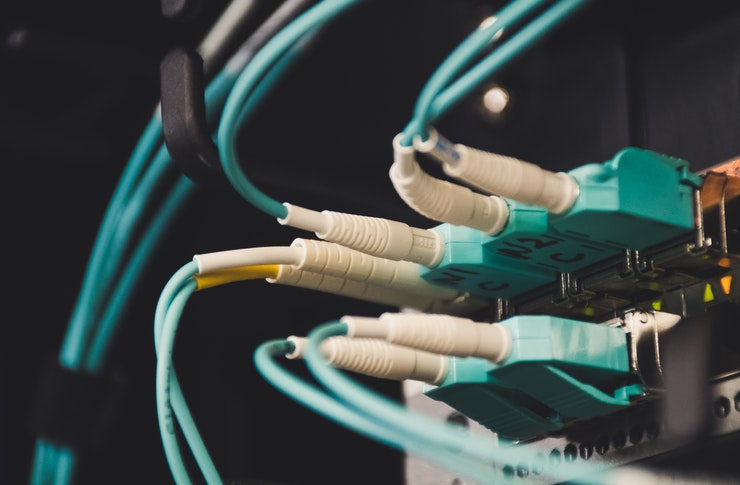Tactile Internet: Revolutionizing Remote Interaction
The advent of high-speed, low-latency networks is paving the way for a groundbreaking innovation: the tactile internet. This emerging technology promises to transform how we interact with remote environments, enabling real-time haptic feedback and precise control over distant objects. As we stand on the cusp of this revolutionary advancement, it's crucial to understand its potential impact on industries, human interaction, and the future of connectivity.

At its core, the tactile internet relies on haptic feedback systems, advanced sensors, and ultra-low latency networks. These components work in concert to create a closed-loop system where actions in one location are instantly replicated in another, complete with sensory feedback. This level of responsiveness opens up possibilities for remote surgery, immersive virtual reality experiences, and precise control of industrial machinery from afar.
The Technical Backbone
Achieving the vision of the tactile internet requires overcoming significant technical challenges. Current network architectures simply cannot meet the stringent requirements for latency and reliability. To address this, researchers and engineers are developing new protocols and network designs specifically tailored to tactile internet applications.
One key area of focus is reducing end-to-end latency to less than 1 millisecond. This incredibly low latency is necessary to create a truly immersive tactile experience without noticeable delay. Achieving this goal involves optimizing every aspect of the network, from the physical layer to application-level protocols. New encoding techniques, advanced error correction algorithms, and innovative routing strategies are all being explored to minimize delay.
Additionally, the tactile internet demands ultra-high reliability. Even minor packet loss or jitter can disrupt the tactile experience or, in critical applications like telesurgery, potentially lead to dangerous situations. To address this, researchers are developing robust error recovery mechanisms and exploring the use of redundant network paths to ensure uninterrupted connectivity.
Potential Applications and Impact
The potential applications of the tactile internet span a wide range of industries and sectors. In healthcare, it could enable surgeons to perform complex procedures remotely, bringing expert care to underserved areas. The ability to feel tissue resistance and manipulate surgical instruments with precision could revolutionize telemedicine.
In education and training, the tactile internet could transform how we learn practical skills. Students could practice delicate procedures or operate complex machinery in a safe, virtual environment with realistic haptic feedback. This could significantly enhance the effectiveness of distance learning and vocational training programs.
The manufacturing sector stands to benefit greatly from tactile internet capabilities. Remote operation of industrial machinery with real-time tactile feedback could improve worker safety and enable more flexible production processes. Maintenance technicians could diagnose and repair equipment from afar, reducing downtime and travel costs.
Entertainment and gaming industries are also poised for disruption. The tactile internet could enable fully immersive virtual reality experiences where users can touch and manipulate virtual objects as if they were real. This level of interaction could revolutionize gaming, virtual tourism, and social media platforms.
Challenges and Considerations
While the potential of the tactile internet is immense, several challenges must be addressed before widespread adoption becomes feasible. The infrastructure requirements for ultra-low latency and high reliability are significant and will require substantial investments in network upgrades and new technologies.
Security and privacy concerns also loom large. The tactile internet will involve the transmission of highly sensitive data, particularly in applications like telemedicine. Ensuring the integrity and confidentiality of this data will be critical to building trust and acceptance among users and regulators.
There are also important ethical considerations to navigate. As tactile internet applications become more sophisticated, questions arise about the boundaries between physical and virtual interactions. Society will need to grapple with the implications of increasingly realistic remote experiences and their impact on human relationships and social norms.
The Road Ahead
The development of the tactile internet represents a exciting frontier in telecommunications. As research progresses and early applications emerge, we can expect to see gradual integration of tactile capabilities into existing network infrastructure. This evolution will likely occur in stages, with initial deployments focused on specific, high-value applications before expanding to more general use cases.
Collaboration between network operators, hardware manufacturers, software developers, and researchers will be crucial in realizing the full potential of the tactile internet. Standardization efforts are already underway to ensure interoperability and accelerate development. As these standards mature, we can expect to see an ecosystem of tactile internet-enabled devices and applications begin to flourish.
The tactile internet holds the promise of fundamentally changing how we interact with the digital world. By bridging the gap between physical and virtual experiences, it has the potential to transform industries, enhance human capabilities, and create entirely new forms of communication and interaction. As we continue to push the boundaries of what’s possible in telecommunications, the tactile internet stands as a testament to the enduring power of innovation to reshape our world.





